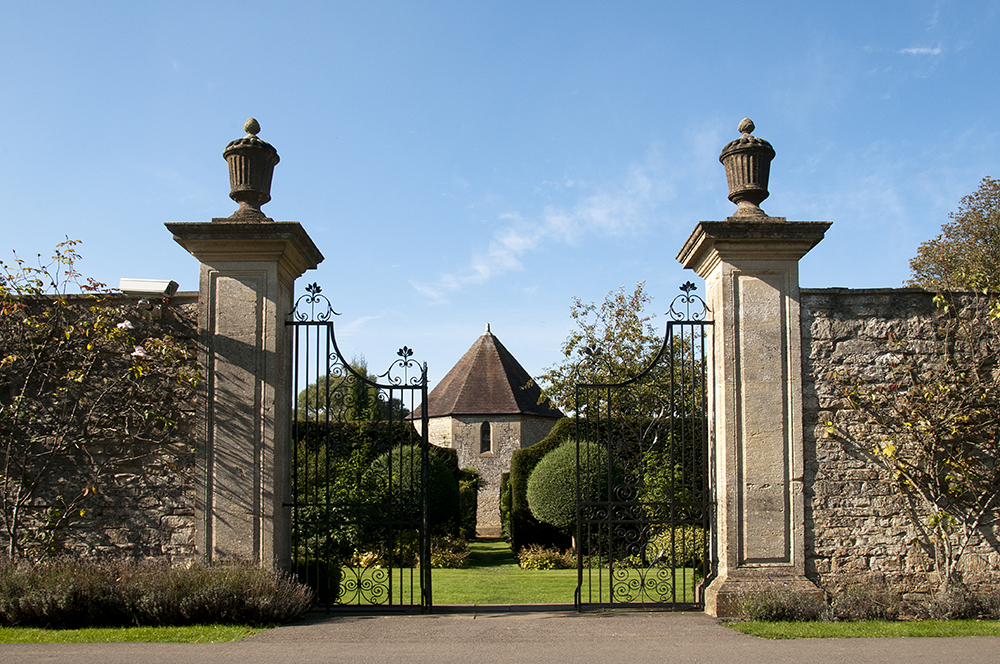The Merry family originally came from Glasgow. In 1928 Archie Merry bought Lucknam Park estate for his only son Eion Merry as a hunting box. When Eion married in 1932 he and his wife Jean moved from Scotland to Lucknam. They made many alterations to the inside and outside of the house. In 1933 the blacksmith from the nearby village of Crudwell made wrought iron gates for the walled garden that are still there today.
The Drawing Room was decorated in blue flock paper (silk finished paper overlaid with velvet designs). The family was given a green and white marble fireplace for the Drawing Room from the father of Davina’s aunt, Alice Crichton.
She had bought it from the Crichtons home in Dublin for a bottle of whisky! In the library, the red flock paper was removed and the current panelling was installed by the great decorators of that era, Lenygon.
Cars were parked in the courtyard. Around the fountain was a ring of cherry trees. The groom and his wife lived in one of the courtyard buildings and the gardeners in the cottages leading to The Spa.
Race horses and hunters were stabled in the farm buildings and Snowdrop bedroom in the courtyard was a saddle room. Apples were stored in the Dovecote.
For a short time at the start of the war, the house was home to hundreds of evacuees before being transformed into a bustling informal headquarters for airmen from the neighbouring aerodrome. They used Lucknam Park’s Beech and Lime tree driveway to park the Spitfire and Hurricane planes – the huge trees being a perfect camouflage.
The main dining room (then used as a Billiard room) had side cupboards filled with tinned food, a billiard table and a large dolls house (now displayed at Longleat House). All its windows were covered with brown paper to block out the light and netting to catch splinters of shattered glass. The entire house was heated by just three fires in the Hall, Library and Drawing Room. During an air raid, everyone in the house raced to the dining room and hid under the Billiard table.
Among the many visitors to Lucknam during the war was Queen Mary who was staying at nearby Badminton House.
When Eion Merry died in 1966 at 63 years, the family could no longer afford the upkeep of the house. Faced with the option of either demolishing both wings of the house to scale down the size they decided to sell to neighbour, Mr Stevens.




